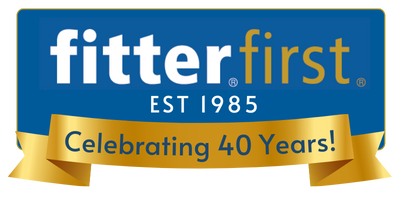⭐ Trusted by top athletes from LIV Golf, NBA, CFL, NFL & Alpine Canada ⭐
⭐ Trusted by top athletes from LIV Golf, NBA, CFL, NFL & Alpine Canada ⭐
Shop
Identifying and Correcting Pelvic Muscular Imbalance with the Pro Fitter Ski Trainer
January 31, 2002 3 min read

Since developing the Pro Fitter ski trainer in 1985, I've observed tens of thousands of people using it at consumer and medical conferences worldwide. Over the past three years, I've been surprised to see that approximately one in five users exhibit muscle imbalances in their trunk, hip, and lower back areas.
These individuals often display a lateral weight shift involving significant rotation in the lower back and pelvic region. Conversations with these users revealed that most had previously experienced trauma to the ankle, knee, or hip on the affected side. It appears that this pelvic rotation generally stems from a muscular adjustment made in the trunk to accommodate the non-weight-bearing phase following a lower extremity injury.
The goal of this article is to outline methods of using the Pro Fitter ski trainer to help identify and possibly correct these imbalances, particularly when the knee and ankle are normal.
Personal Experience and Observations
After my own rehabilitation from knee and foot surgeries (1979, 1983) and my time on the Canadian National Speed Skiing Team (1992), I personally understand how pelvic muscular imbalance can lead to improper weight shifts when turning on skis. For many skiers, this rotation increases the difficulty in turning because they tend to rotate forward and lean back on the tail of the edging ski. This stance uses less gluteus medius muscle activity and more hip flexors, requiring the lower back muscles on the opposite side to contract to balance the movement. Many skiers complain of a weak turning side and lower back pain, and I believe pelvic rotation and muscular imbalance may be part of the problem.
Using the Pro Fitter to Identify Imbalances
After observing thousands of Pro Fitter users, it's clear that the majority who show pelvic rotation have experienced previous trauma to the lower extremity on the affected side. Additionally, many of these individuals have reported regional pain in the lower back on the opposite side. There is ongoing evidence suggesting that the Pro Fitter helps train the trunk and hip girdle muscles to participate in proper stabilization while skiing. Focusing on muscular balance and strength with the Pro Fitter may help improve pelvic posture and decrease the frequency of regional pain syndromes during skiing.
Steps to Evaluate and Improve Muscle Balance
In a general patient population, the Pro Fitter can be used with or without balance aids to evaluate and improve muscle balance. Here are some steps to follow:
-
Initial Observation:
- Observe the patient using the Pro Fitter for the first time.
- Encourage proper foot placement and an upright stance (Figure 1).
- Watch for postural reactions indicating muscular imbalance (Figure 2). Common signs include:
- Tilted/rotated head and shoulder positions
- Rotation and overcompensation of upper body movement
- Aggressive use of balance aids when shifting to the affected side
- Rotated and tilted trunk and pelvic girdle to the affected side
- Instability in the ankle and/or knee on the affected side
-
Power Thrust Exercises:
- On easy tension, have the patient perform 8-15 power thrust exercises on each side while observing for the above indications (Figure 3).
- Muscle fatigue may cause the patient to adjust their pelvic position further to the rear on the affected side.
- Gather information on the patient's movement patterns to determine which muscles require strengthening and which are being overused.
-
Assign Exercises:
- Assign exercises such as power thrust variations (Figures 3-6) to strengthen the correct muscle groups while minimizing the involvement of overused muscles.
- Position the trunk in a way that promotes the use of the correct muscle groups.
These exercises will help improve the patient's natural muscular movement patterns and may reduce the frequency of regional pain syndromes.
Conclusion
I hope this process provides an additional method to evaluate muscular strength in the pelvic region and gives you new ideas for using your Pro Fitter ski simulator. If you have any comments or specific experiences related to this discussion, please get in touch with us at Fitterfirst Inc.






Subscribe
Sign up to get the latest on sales, new releases and more …
